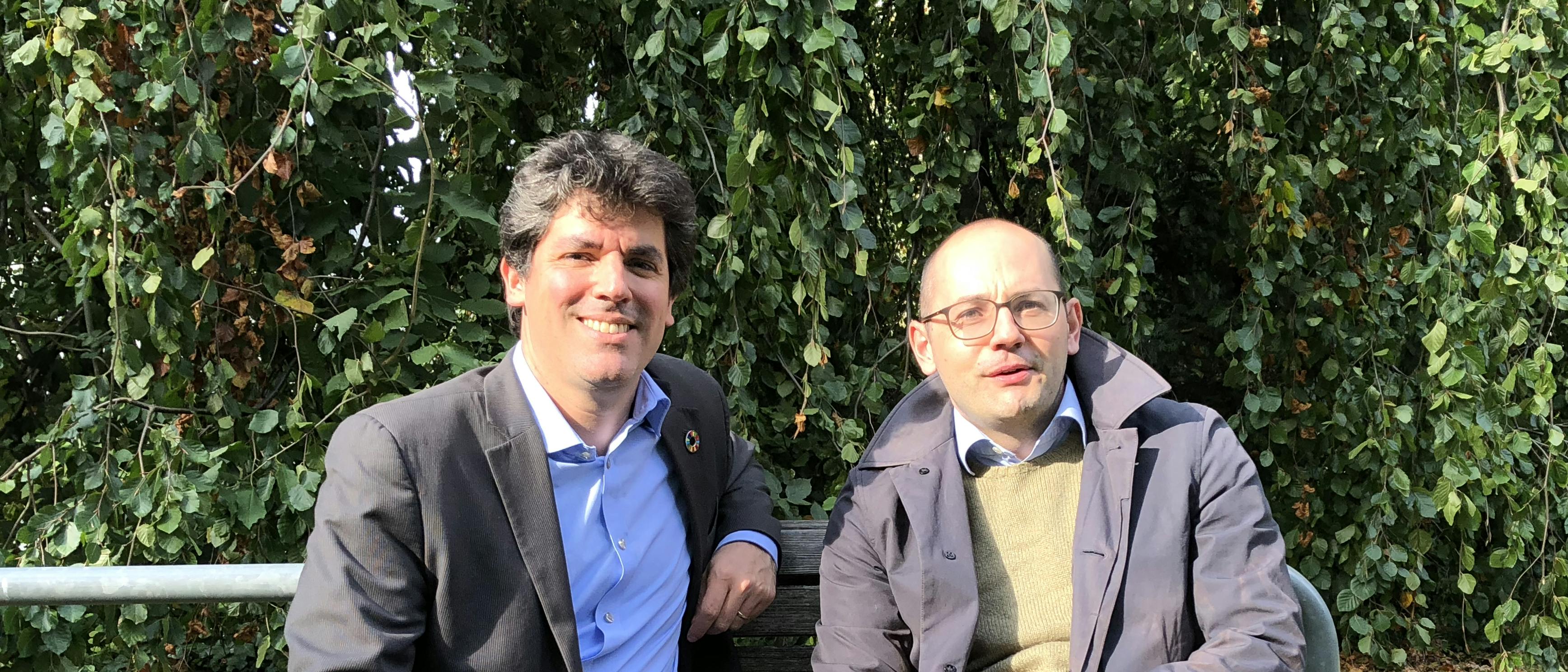CountryRisk.io conversations - Part I
Steve Freedman talks with Bernhard Obenhuber about ESG investing and its challenges

Bernhard Obenhuber
Oct 23, 2018

Steve, thanks for taking the time to talk to us. I realize you are here in Zurich for business, so I appreciate the time you are making to talk about sustainable investing. We have known each other for many years and worked together at UBS doing asset allocation. In recent years, you’ve spearheaded the sustainable investing activities of UBS Wealth Management Americas and also, have been teaching Environmental Finance at New York University.
While this series of blog posts is about sustainable investing and how to integrate it in investment decisions, the idea is to also put it within the context of economic and country risk analysis.
Today, we want to talk about your perspectives on the rapidly evolving field of sustainable investing and more personally, how you got started in this field.
Sustainable investing means different things to different people, Steve, what is your own definition?
In the broadest sense, it’s a set of approaches that incorporates non-financial considerations into investment decisions. In some cases, this can be done to reflect investor preferences. In others, it’s based on the belief that nonfinancial information, such as environmental, social and corporate governance (i.e. ESG) data, is financially relevant and can help improve investment decisions. In all cases, we are not talking about philanthropy, but rather about investments that seek a financial return.
I would distinguish between three broad approaches. The first is negative screening. This is largely based on an investor’s preference to avoid exposure to specific business activities such as tobacco, firearms or alcohol, to name just a few examples.
The second is ESG Investing, where Environmental, Social and Governance factors are incorporated into investment decisions, with a view toward improving investment outcomes by being more holistic.
Finally, Impact Investing aims to achieve a double bottom line, i.e. both a financial return and a positive environmental or social impact.
You have been active in the area of banking and investing for many years. How did you become involved in sustainable investing?
Like many others in this field, I started my career acquiring experience in traditional investment areas. I was first an economist, then a public policy analyst in Zurich. I then moved into wealth management at UBS as an investment strategist. I was tasked with building their tactical asset allocation capabilities in the US, ran their US Investment Committee for a number of years and was instrumental in launching their managed portfolio program. I then moved on to creating a thematic research offering, which focused on identifying longer-term trends and turning them into investable recommendations to support the transactional business.
I was looking for a way to use my financial expertise in a manner that would align with my personal values.
While I enjoyed all of these roles, it started becoming clear to me that I needed a mid-career pivot. I was looking for a way to use my financial expertise in a manner that would align with my personal values. It so happened that my employer was looking to expand its footprint in the Sustainable and Impact Investing area. This created a mutually beneficial opportunity. I was tasked with developing the framework for Sustainable Investing in wealth management and producing a number of foundational white papers. This effectively launched this new business area, which gave me a second wind, and I haven’t looked back since then.
To what extent are you invested in ESG solutions and what has been your own experience with them?
My earliest exposure and experience was largely through my 401(k) retirement plan. It actually required considerable work, as none of these investment options were standard. I had to use a “window” into a self-directed brokerage account. Even there, though, the options were too limited to build an entire portfolio but enough to get started and gather some direct personal experience with ESG investments. While I gained some satisfaction from knowing that my funds were being invested according to some sustainability principles, I felt that my experience was not that different from traditional investments. In particular, there wasn’t that much visibility into what made these investments sustainable.
The choice of ESG investments in retirement accounts is one of the key challenges the industry is facing.
While the number of investment options has grown in recent years, I think that, more generally speaking, increasing the choice of ESG investments in retirement accounts is one of the key challenges the industry is facing. There is a lot of talk about how the Millennials are one of the key drivers of demand for sustainable investments. Yet, most of millennial wealth is in retirement accounts, at least for now, and faces the same hurdles that I did.
What are other key challenges for sustainable investing?
The first challenge is how to serve the growing demand with investment solutions that do not water down standards to the point where they become meaningless. Traditional wealth and asset management firms are increasingly entering the sustainable investing field. At times, their greater scale is allowing them to commit enough resources to do so credibly and even contribute to developing best practice. In other cases, new entrants have tried to get by with the bare minimum they can get away with. Eventually, investors will be able to tell the difference. However, for the time being this is creating confusion in the field.
A second challenge is accelerating the use of ESG data across the investment management industry as a best practice standard. I think of this as risk management 2.0.
In parallel, there is also an acute need to accelerate the deployment of capital in pursuit of solutions to major challenges. Think of the UN’s Sustainable Development Goals as a roadmap here. This will ultimately be the focus of a smaller subset of private assets. However, it’s one that needs to grow considerably and requires a lot of creativity and innovation.
Finally, how to serve millennial demand for sustainable investing is something that few investment firms have figured out. Beyond the questions around retirement plans, it is clear that Millennials value attributes in their investments beyond their sustainability or impact. The ability to receive customized solutions, frequent or on-demand updates and a high level of transparency are features that Millennials seem to gravitate to in their general consumer behavior. It seems natural to expect that serving Millennials well with sustainable investments will also require offering such features.
If you had to start from scratch, how would you build a Wealth Management Advice service for sustainable investing?
It all has to start with understanding client preferences.
From a wealth management perspective, it all has to start with understanding client preferences. Traditional client profiling is often limited to aspects such as time horizon, risk aversion or liquidity and income needs. With sustainable investing, a broader array of questions becomes relevant. There is the philosophical question of what the client’s main motivation is. Is it the desire to avoid controversial activities, and if so which ones? Or is the desire to drive positive change in the world? In this case, which thematic areas have the highest priority? Or is it perhaps a view that ESG risks should be well-accounted for in the portfolio?
The second step is to develop a menu of sustainable investment solutions. These should ideally span the main asset classes. They should also be classified according to a system that makes it easy to navigate across different solutions in order to at least partially reflect client preferences determined in the first step.
Third, portfolio guidance should be offered to clients so as to assemble a well-balanced and diversified combination of the building blocks available in step two in a way that addresses the preferences elicited in step one. Clearly, the ability to customize portfolios will be higher for larger account sizes. However, finding ways to offer at least some basic customization for smaller account sizes should be a consideration.
Finally, developing capabilities to report back to clients on the sustainability and impact of their portfolios is a must to be credible in the sustainable investing space. Some of the frustrations I personally experienced earlier on in this regard appear to be shared by many investors in this space.
How do you see the role of sustainability and impact reporting evolving?
With sustainable and impact investing, the client experience has to be somewhat different. The value proposition is that ESG factors are being taken into account, or perhaps even that the investments are targeting a second bottom line of positive environmental or social impact. It is therefore quite natural that there should be some accountability on these additional dimensions, just like there is accountability for financial performance.
But the difficulty is that the second bottom line is much more challenging to capture in a single or even a small number of figures. Sustainability and positive impact have multiple dimensions and reporting inevitably becomes somewhat messy. There is a certain tension between the desire to be systematic and disciplined in impact reporting and the need to account for the idiosyncratic nature of each investment. At the moment, best practice seems to involve a sound balance between reporting certain indicators that are relatively straightforward to capture across an entire portfolio (e.g. carbon footprint) and highlight other specific impacts separately, possibly in a more anecdotal manner. The field is evolving rapidly and I would expect investor needs to be more readily met in coming years.
Thank you Steve.
In the next blog article, we will focus on integrating ESG into various areas of risk management, including country risk assessments. You can follow this series by connecting with Steve on LinkedIn or CountryRisk.io. You can also comment below or write to [email protected].
